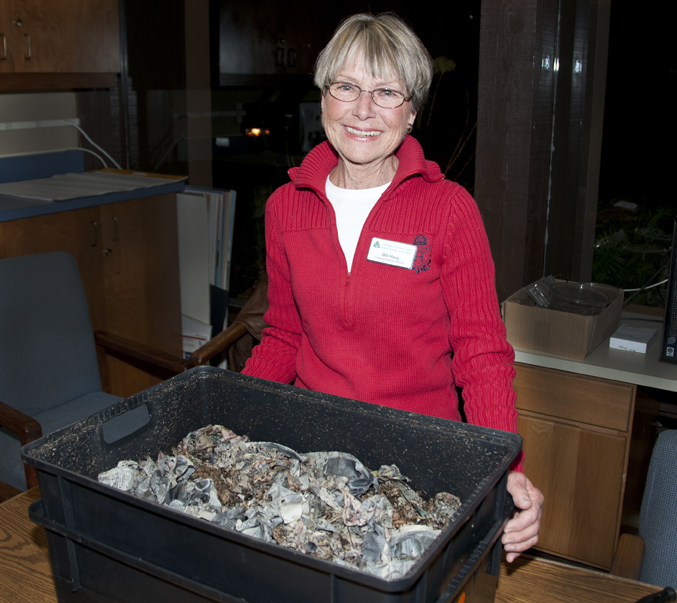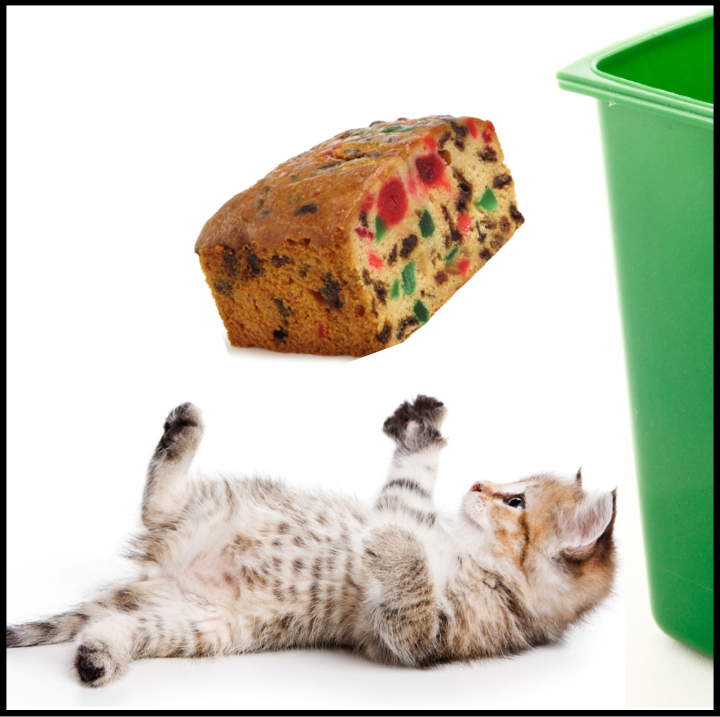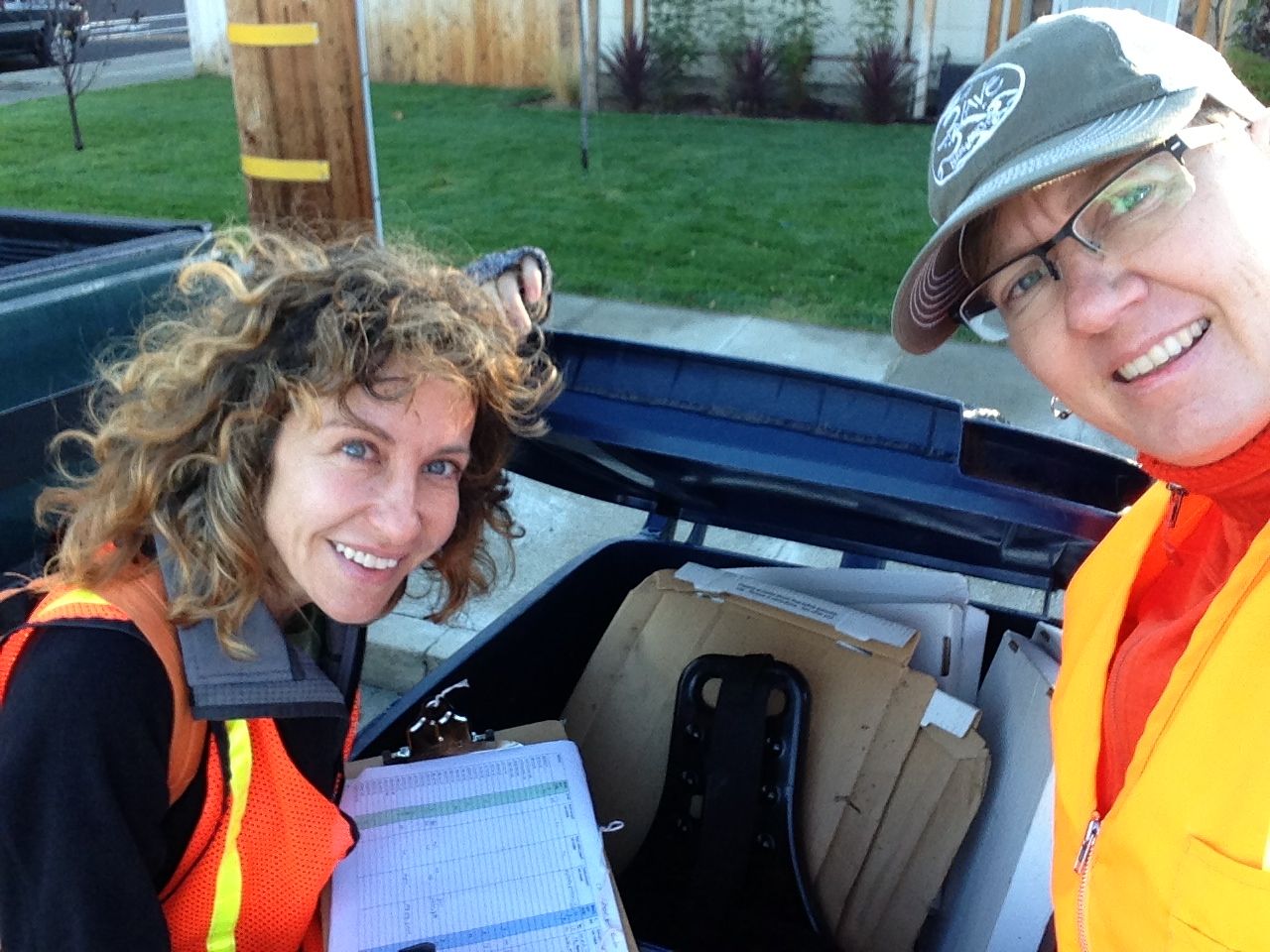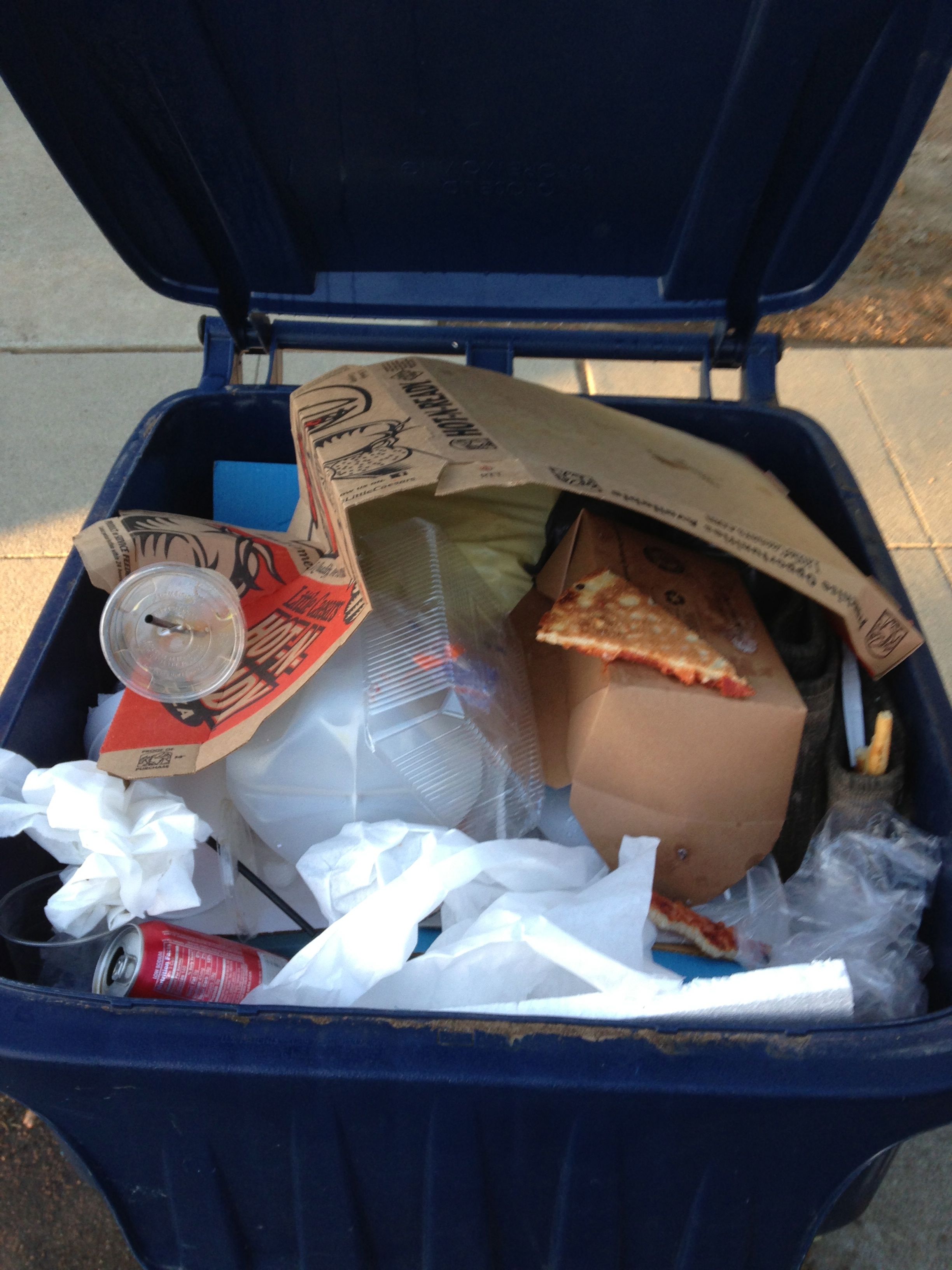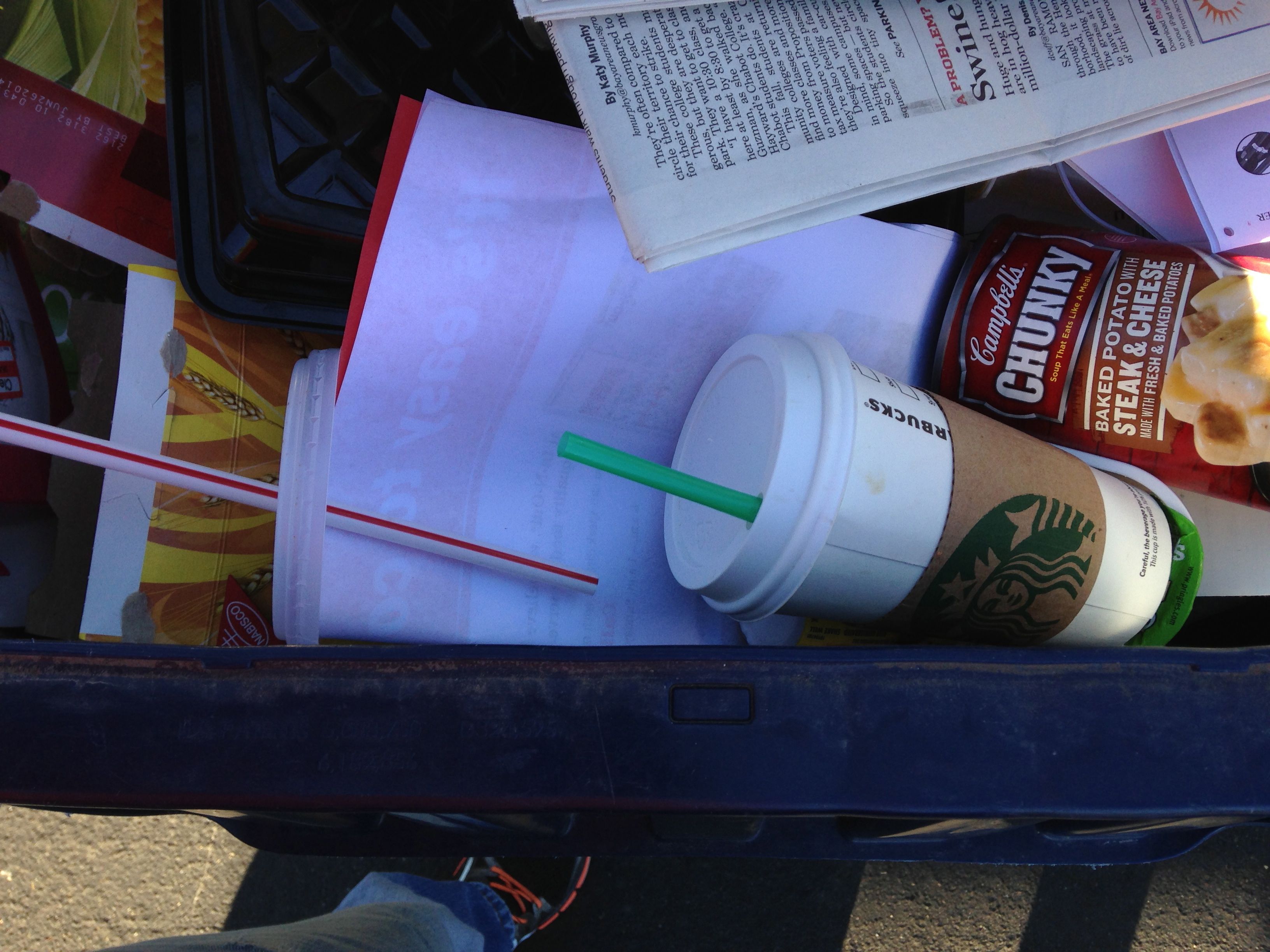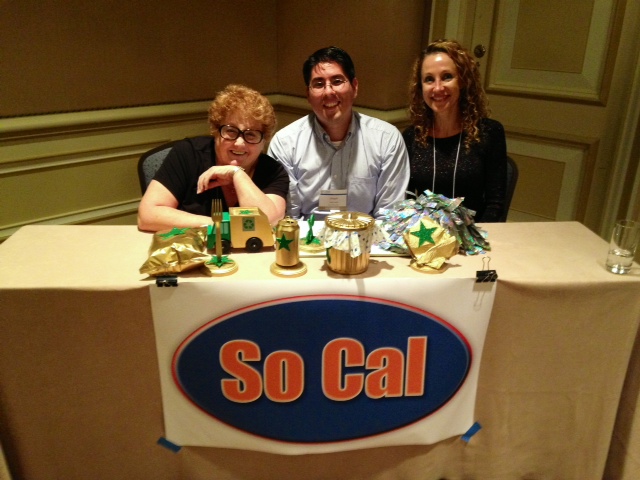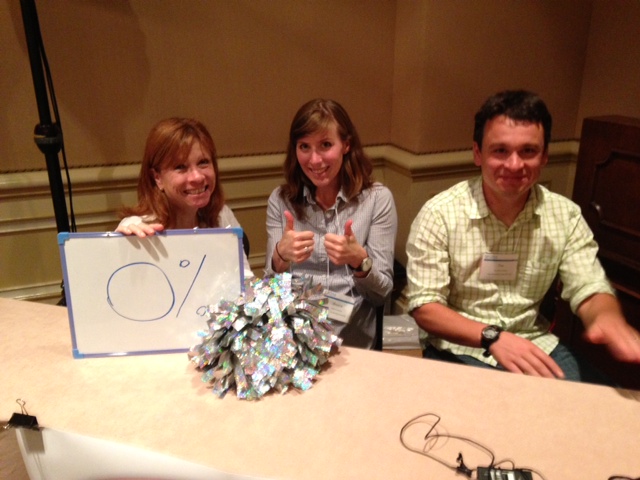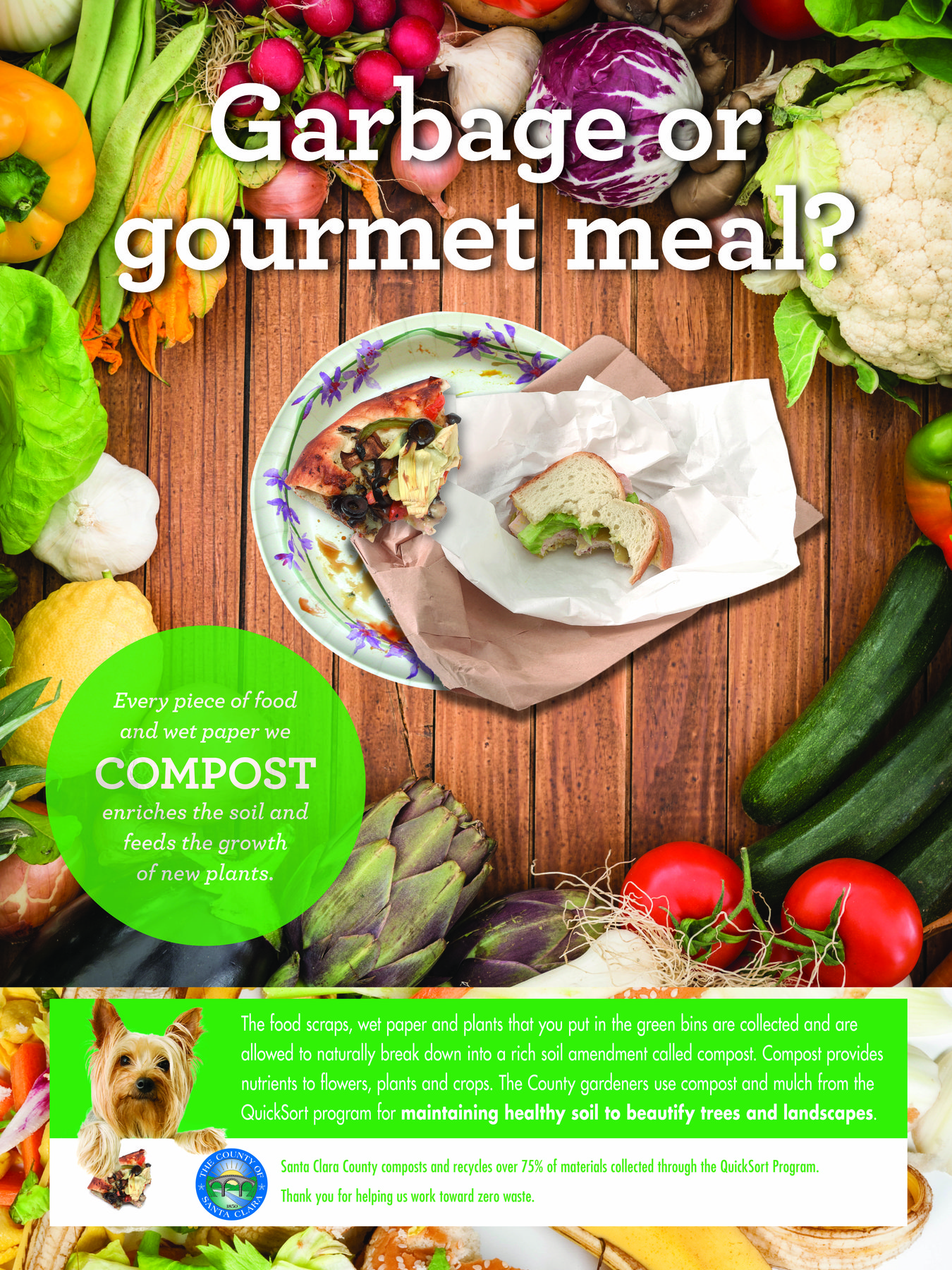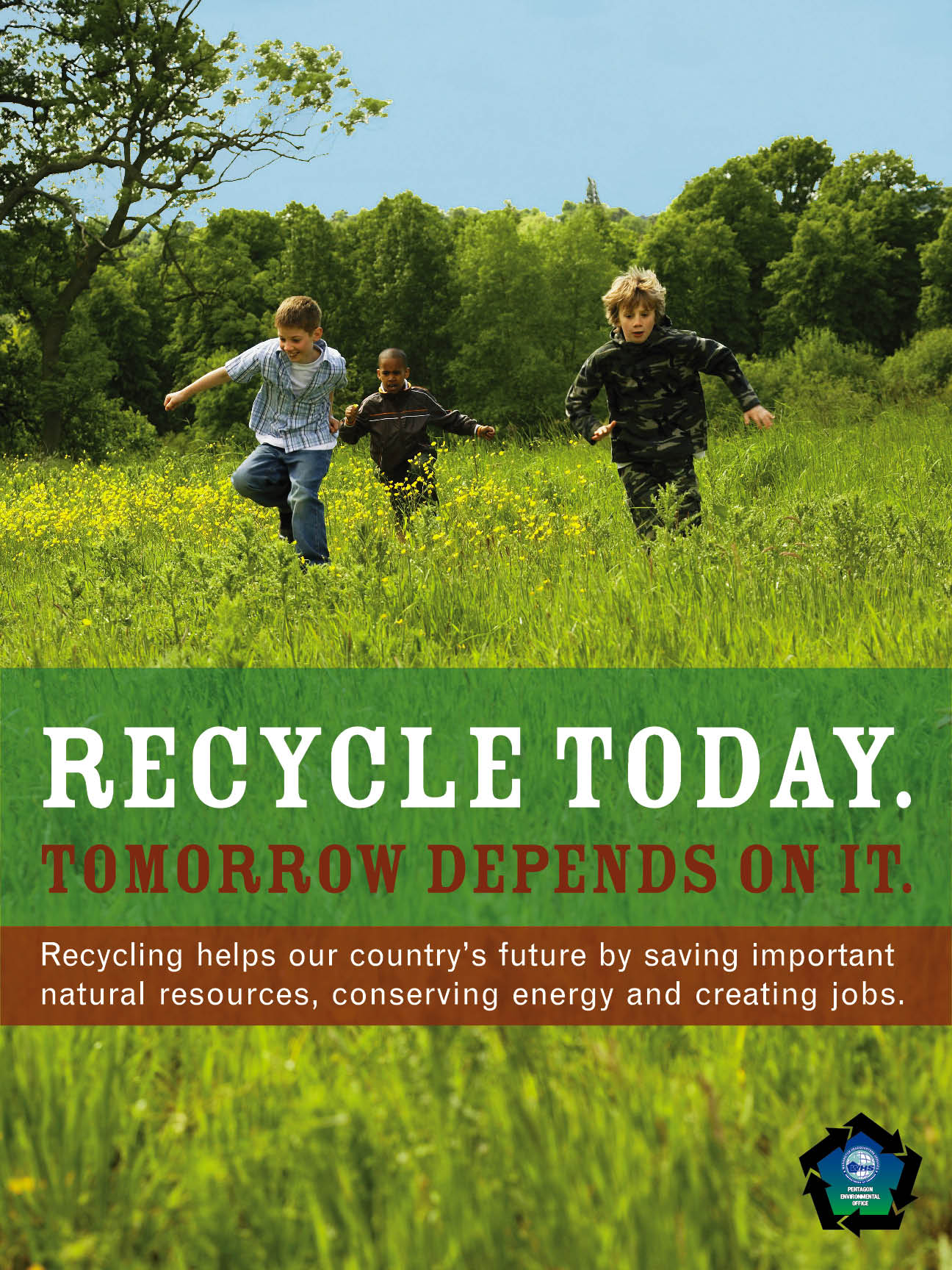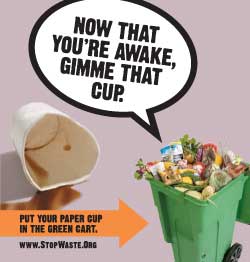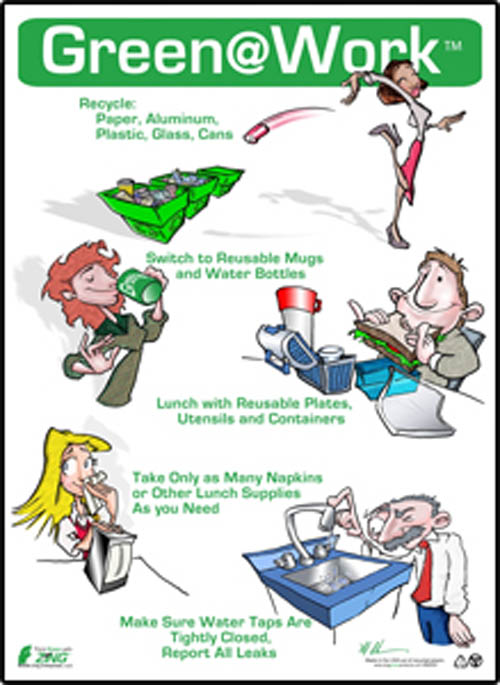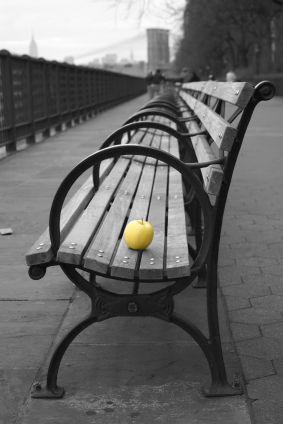Every so often we run into people doing important environmental work who deserve some recognition. This inspired us to launch a Gigantic Q&A blog series, highlighting local citizens making a difference.
Fleurette Sevin
Recycled Glass Artist
Walnut Creek
KN: What inspires you as an artist?
FS: I enjoy the problem solving that comes from being a reuse artist. Sometimes I have an idea of something I want to make and go and look for materials. Other times, I will find an interesting object and think, “What can I make out of that?”
KN: How do you incorporate sustainability and green practices into your art pieces?
FS: Most importantly I try to have as much as possible—if not all—of my material be recycled. I try to stay away from toxic and harmful chemicals. I use a sandblaster instead of etching my glass with chemicals.
KN: What is your favorite material for making new artwork and why?
FS: Glass! Most of my professional work has been in glass and that is where I have the most experience. Each bottle factory has its own formula for glass, and the ratios by which the glass expands and contracts are different. In short, you can’t melt different colored bottles together because they may crack. This challenges me to make the glass interesting in other ways. I can add texture by twisting, adding wire, sand blasting and tumbling. I use combinations of glass techniques—from flameworking with a torch to fusing, slumping and coldworking. Glass can be both a liquid and a solid.
KN: What kind of reactions do your art pieces get?
FS: Mostly positive. Quite often people cannot tell at first that the pieces are made from recycled materials. Recycled does not have to look rough or “trashy.” I hope I can inspire others to take a second look at their own trash and find creative uses for it. Some people turn away from my bullet casing jewelry because of the association with violence, which is understandable. I like to think of it as transforming an object symbolic of destruction into a thing of beauty.
KN: What would be your dream art project?
FS: I enjoy sharing ideas and collaborating with other artists. My dream project would be working with other reuse artists on bigger, public works projects.
Want to know more about Fleurette? Find her here:
http://www.flower7.com/
https://www.facebook.com/Flower7Art
https://www.etsy.com/shop/Flower7


